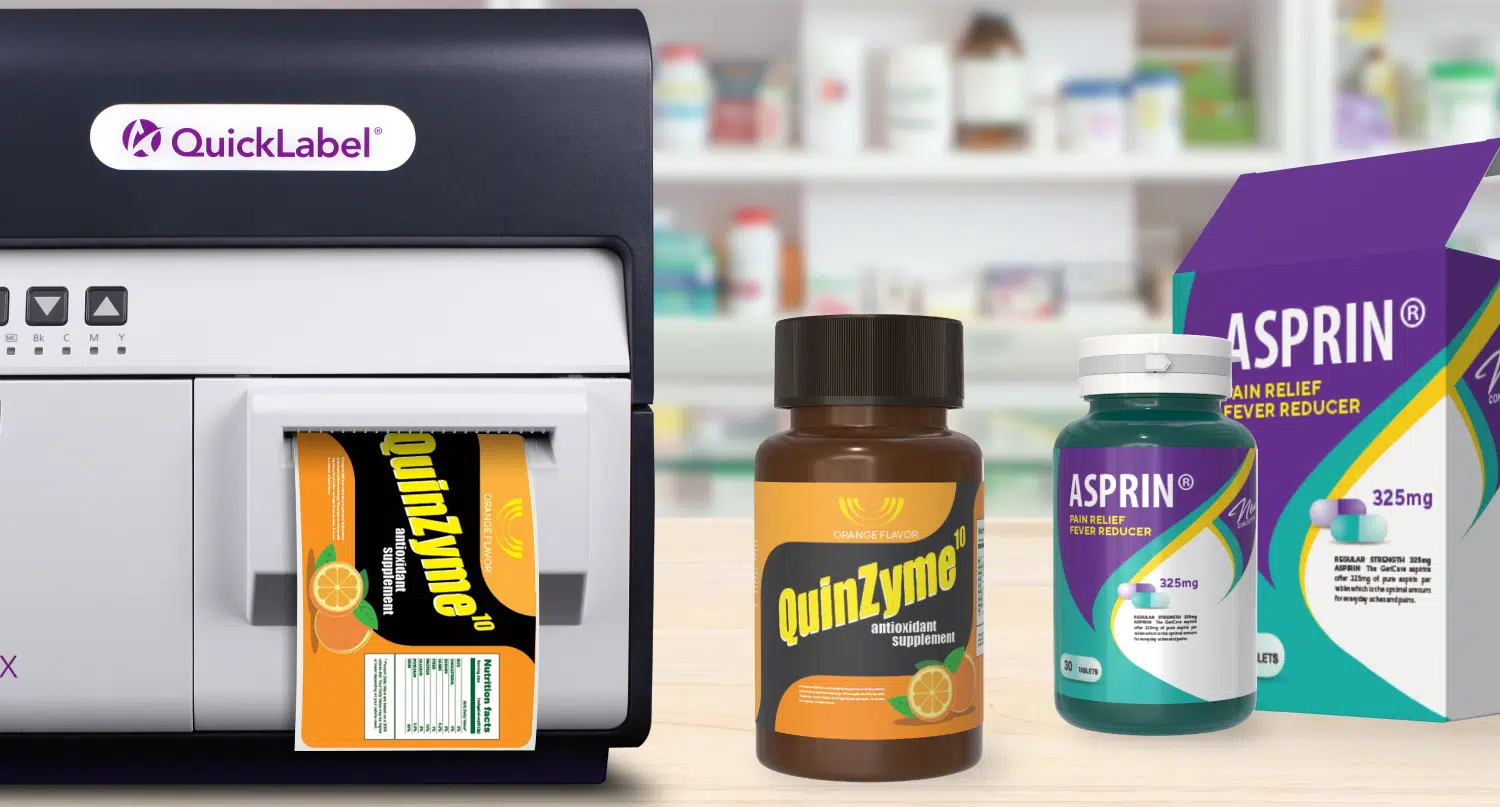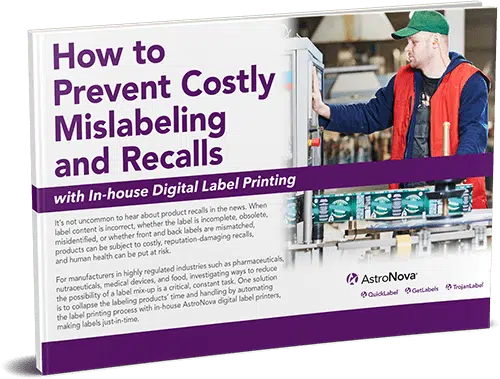
In the pharmaceutical industry, precision in labeling is more than just an operational requirement — it is a fundamental aspect of patient safety and regulatory compliance. Labels contain critical information, including dosage instructions, expiration dates, batch numbers, and warnings, all of which must be accurate, legible, and durable. Errors in labeling can lead to serious consequences, from regulatory penalties to compromised patient health.
Pharmaceutical manufacturers increasingly turn to in-house printing solutions to mitigate risks and maintain compliance as a reliable approach.
Regulatory Requirements for Pharmaceutical Labeling
Pharmaceutical labeling is subject to stringent regulatory oversight to ensure consistency, accuracy, and safety. Governing bodies such as the U.S. Food and Drug Administration (FDA) and the European Medicines Agency (EMA) have established comprehensive guidelines for labeling compliance.
Key regulations include:
- FDA 21 CFR Part 211: Requires that pharmaceutical labels contain clear and accurate information regarding ingredients, dosing, and safety warnings.
- EU Falsified Medicines Directive (FMD): Mandates serialization to prevent counterfeit drugs from entering the supply chain.
- Good Manufacturing Practices (GMP): Ensures labels are printed and applied correctly to avoid misidentification or contamination.
Failure to comply with these regulations can pose significant patient safety risks and lead to costly product recalls, legal consequences, adverse publicity, and lasting reputational damage.
Recent and Upcoming Labeling Requirements
The past few years have introduced new labeling requirements that impact pharmaceutical manufacturers globally:
- Enhanced Serialization and Traceability: Regulatory frameworks such as the U.S. Drug Supply Chain Security Act (DSCSA) now require serialized 2D barcodes to track and verify medications throughout the supply chain.
- Digital Labeling Initiatives: Agencies are exploring the use of electronic and QR code-based labeling to supplement printed materials and provide real-time updates.
- Sustainability Requirements: Increasing emphasis on eco-friendly label materials, recyclable product labeling solutions, and reduced waste in label production.
Looking ahead, additional regulations are expected to focus on:
- Expanded serialization mandates, requiring even more detailed tracking information.
- Stricter allergen labeling to improve transparency for patients.
- Global harmonization efforts to align labeling standards across multiple regions.
Label Accuracy and Patient Safety
The accuracy of pharmaceutical labels directly impacts patient safety. A misprinted dosage, incorrect expiration date, or missing warning label can lead to improper use, adverse reactions, or ineffective treatment. Nationally reported incidents of labeling errors have led to serious health risks and, in some cases, fatalities. For example, in 2023, an FDA-mandated recall affected multiple pharmaceutical companies due to misprinted labels that led to dosing confusion.
To prevent such risks, manufacturers must implement quality control measures that ensure every label is printed to the highest standards of accuracy, readability, and durability.
The Role of In-House Label Printing in Compliance and Precision
Many pharmaceutical manufacturers are adopting in-house label printing solutions and label presses to maintain full control over the printing process and enhance compliance with regulatory requirements.
Benefits of in-house label printing include:
- Real-Time Updates: Manufacturers can instantly modify labels in response to new regulations or formulation changes.
- Improved Quality Control: Direct oversight minimizes the risk of misprints, misalignments, or damaged labels.
- Cost Efficiency: Reduces reliance on third-party vendors and eliminates lead times associated with outsourced printing.
- Customization and Flexibility: Enables quick adaptation to batch-specific or region-specific labeling requirements.
- On-Demand Color Labels: Allows pharmaceutical companies to print vibrant, high-quality labels without waiting for large production runs.
- Direct-to-Package Printing: Supports innovative approaches that streamline packaging workflows and improve efficiency.
By integrating advanced label printing solutions into their operations, pharmaceutical companies can ensure that their labels meet compliance standards while maintaining efficiency and accuracy.
Conclusion: The Critical Need for Precision in Pharmaceutical Labeling
Precision and compliance in pharmaceutical labeling are non-negotiable. As regulatory demands evolve and patient safety remains a top priority, pharmaceutical manufacturers must adopt reliable in-house label printing solutions to meet industry requirements effectively. By doing so, they can maintain control over labeling accuracy, ensure compliance with ever-changing regulations, and ultimately, safeguard the health and well-being of patients worldwide.
Learn More!
Download the ebook, How to Prevent Costly Mislabeling and Recalls with In-House Digital Label Printing, to discover how automating the label printing process with AstroNova digital label printers can enhance product labeling compliance, improve patient safety, and optimize production efficiency by reducing handling time and enabling just-in-time label creation.




